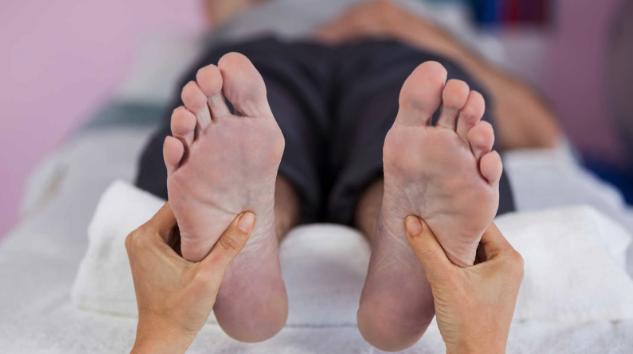
Diabetic wound care requires careful attention, as slow healing and increased infection risk make even minor injuries a serious concern. Speaking openly with your doctor is key to preventing complications and protecting long-term health. Here are 4 questions to ask your doctor about diabetic wound management:
What Warning Signs Should I Watch For?
Your doctor should explain the specific warning signs that indicate your wound needs immediate medical attention. Diabetic wounds often start as minor injuries but progress quickly without proper monitoring. Recognizing these early warning signs enables you to seek treatment before complications arise.
Key warning signs include changes in wound color, increased drainage, or unusual odors. Your wound may also feel warm to the touch or show signs of spreading redness around the edges. Ask about pain levels, since nerve damage from diabetes sometimes masks pain that would normally alert you to problems.
Temperature changes in your foot or leg may also signal potential complications. Your doctor should instruct you on how to monitor these changes daily. Make sure you understand which symptoms require immediate medical attention versus those that need monitoring over the next few days.
What Are the Best Treatment Options?
Treatment options vary significantly depending on the location, size, and severity of your wound. Your diabetic wound care doctor should explain why they recommend specific treatments for your particular situation. Understanding your treatment plan helps you follow instructions properly and recognize when adjustments may be needed.
Blood flow plays a major role in diabetic wound healing. Poor circulation often causes diabetic wounds, so your doctor may recommend vascular studies to check blood flow to the affected area. Some treatments focus on removing dead tissue, while others promote the growth of new tissue. Your doctor may recommend special dressings, medications, or procedures to improve healing.
How Do I Prevent Future Wounds?
Prevention strategies form the foundation of effective diabetic wound management. Your doctor should provide specific steps you should take daily to reduce your risk of developing new wounds. These strategies often involve managing blood sugar levels, maintaining proper foot care, and making lifestyle modifications.
Blood sugar management has a direct impact on your body’s ability to heal wounds and fight infections. Your doctor should explain target blood sugar levels and help you understand how high blood sugar can slow down healing. Also, ask about how medications, diet, and exercise work together to maintain stable blood sugar levels. Proper footwear and regular foot inspections can help prevent many diabetic wounds. Your doctor should demonstrate how to examine your feet for cuts, blisters, or pressure spots.
When Should I See a Specialist?
Knowing when to seek specialist care helps you access advanced treatments before complications develop. Your primary care doctor should explain specific situations that require referral to a wound care specialist or a vascular surgeon. Early specialist intervention often prevents severe complications.
Wounds that don’t heal within a reasonable timeframe need specialist evaluation. Your doctor should define what constitutes normal healing progress for your situation. Some wounds require advanced treatments, such as specialized dressings, growth factors, or procedures, to improve blood flow. Signs of infection also warrant specialist care. Your doctor should explain how diabetic wounds can become infected and what symptoms indicate a serious infection.
Book Your Diabetic Wound Care Appointment Today
Asking the right questions during medical appointments can lead to better diabetic wound care outcomes. These four questions help you understand your condition, treatment options, and prevention strategies. Contact your healthcare provider to schedule a diabetic wound care appointment and start asking these fundamental questions about your treatment plan.





